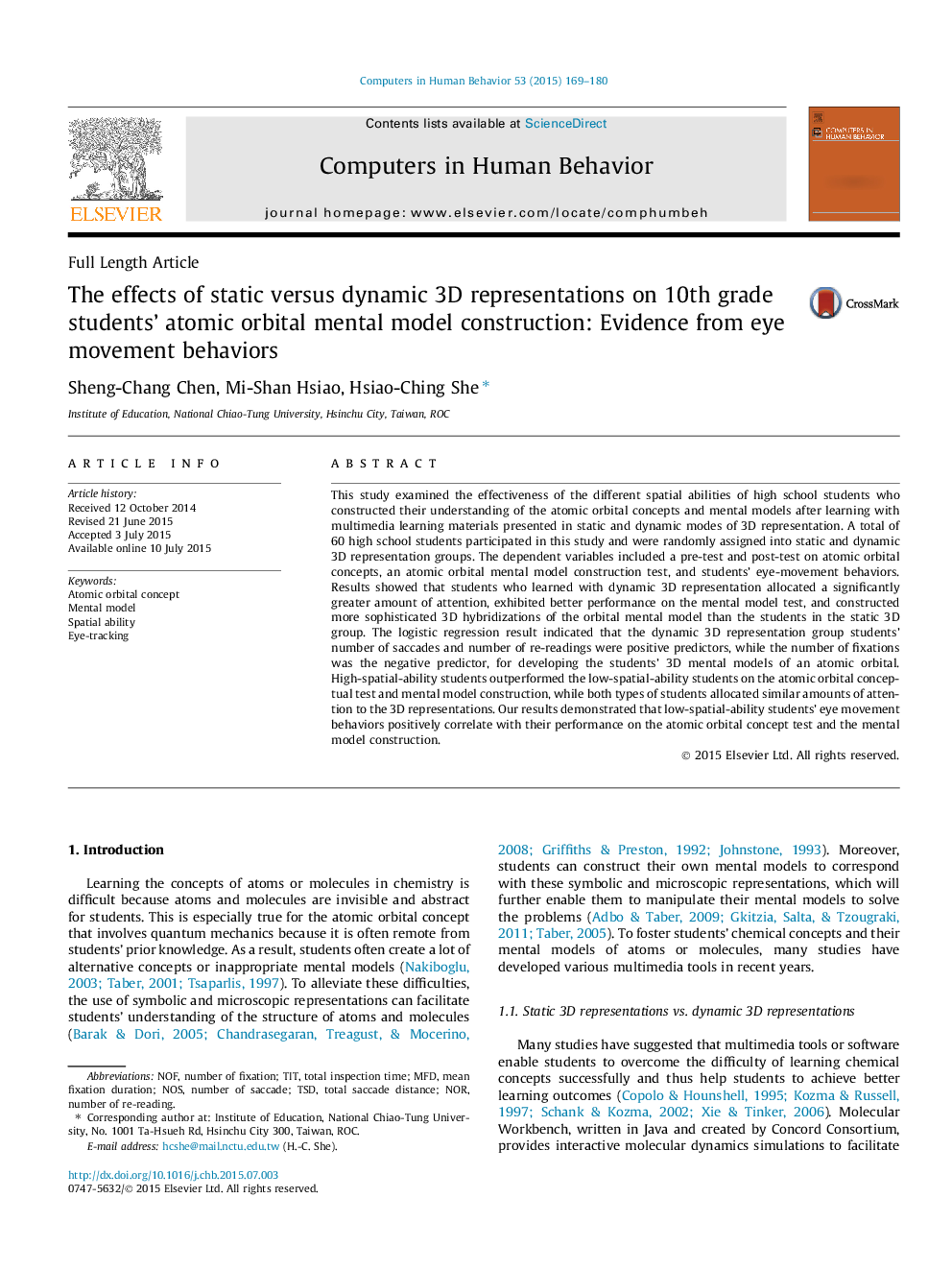| کد مقاله | کد نشریه | سال انتشار | مقاله انگلیسی | نسخه تمام متن |
|---|---|---|---|---|
| 350095 | 618430 | 2015 | 12 صفحه PDF | دانلود رایگان |
• Dynamic 3D representations enhanced students’ performance.
• Dynamic 3D representations fostered students to allocate greater attention.
• Eye movements could predict students’ 3D mental models of an atomic orbital.
• Low-spatial-ability students with dynamic 3D representations spent more attention.
This study examined the effectiveness of the different spatial abilities of high school students who constructed their understanding of the atomic orbital concepts and mental models after learning with multimedia learning materials presented in static and dynamic modes of 3D representation. A total of 60 high school students participated in this study and were randomly assigned into static and dynamic 3D representation groups. The dependent variables included a pre-test and post-test on atomic orbital concepts, an atomic orbital mental model construction test, and students’ eye-movement behaviors. Results showed that students who learned with dynamic 3D representation allocated a significantly greater amount of attention, exhibited better performance on the mental model test, and constructed more sophisticated 3D hybridizations of the orbital mental model than the students in the static 3D group. The logistic regression result indicated that the dynamic 3D representation group students’ number of saccades and number of re-readings were positive predictors, while the number of fixations was the negative predictor, for developing the students’ 3D mental models of an atomic orbital. High-spatial-ability students outperformed the low-spatial-ability students on the atomic orbital conceptual test and mental model construction, while both types of students allocated similar amounts of attention to the 3D representations. Our results demonstrated that low-spatial-ability students’ eye movement behaviors positively correlate with their performance on the atomic orbital concept test and the mental model construction.
Journal: Computers in Human Behavior - Volume 53, December 2015, Pages 169–180
